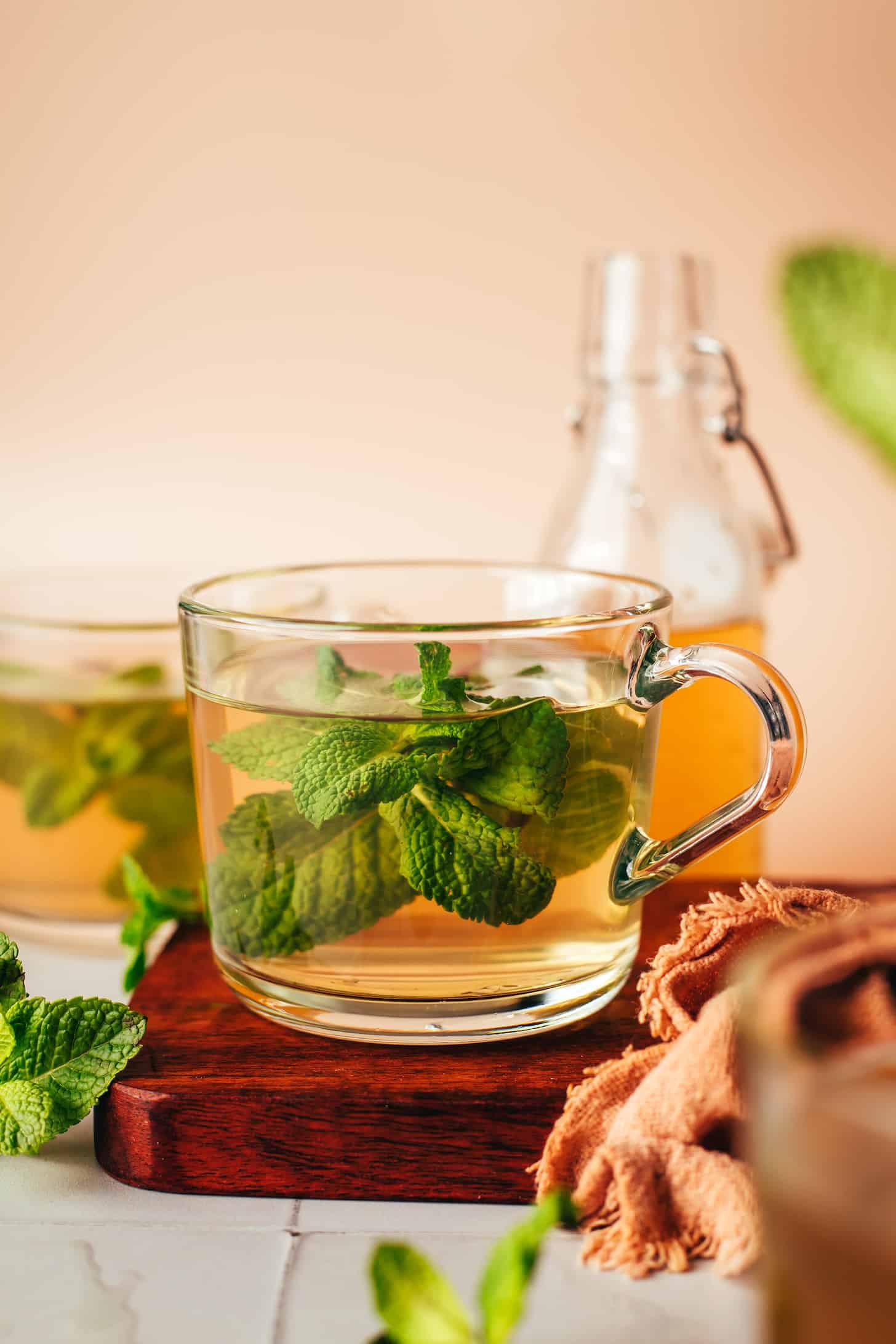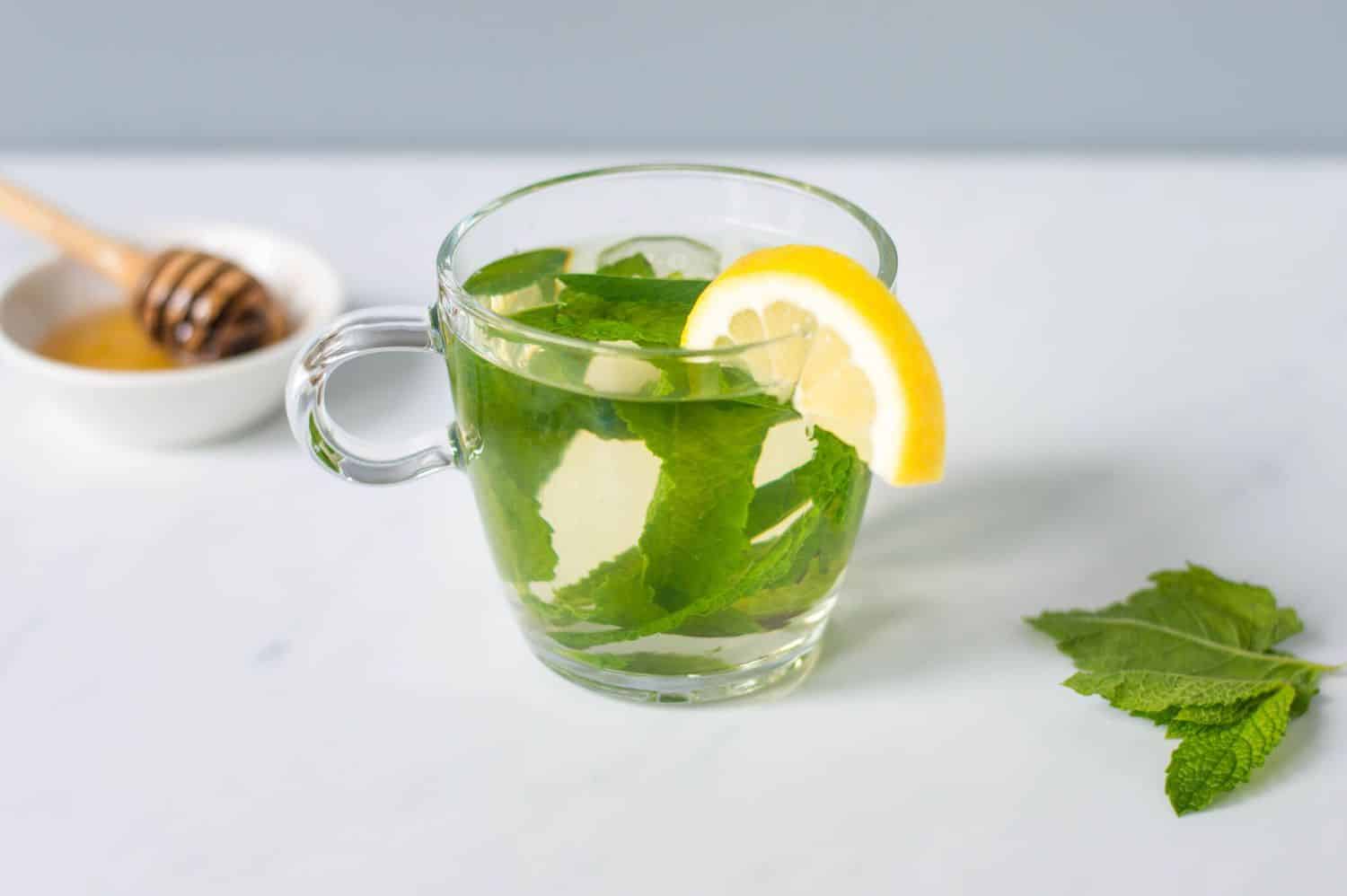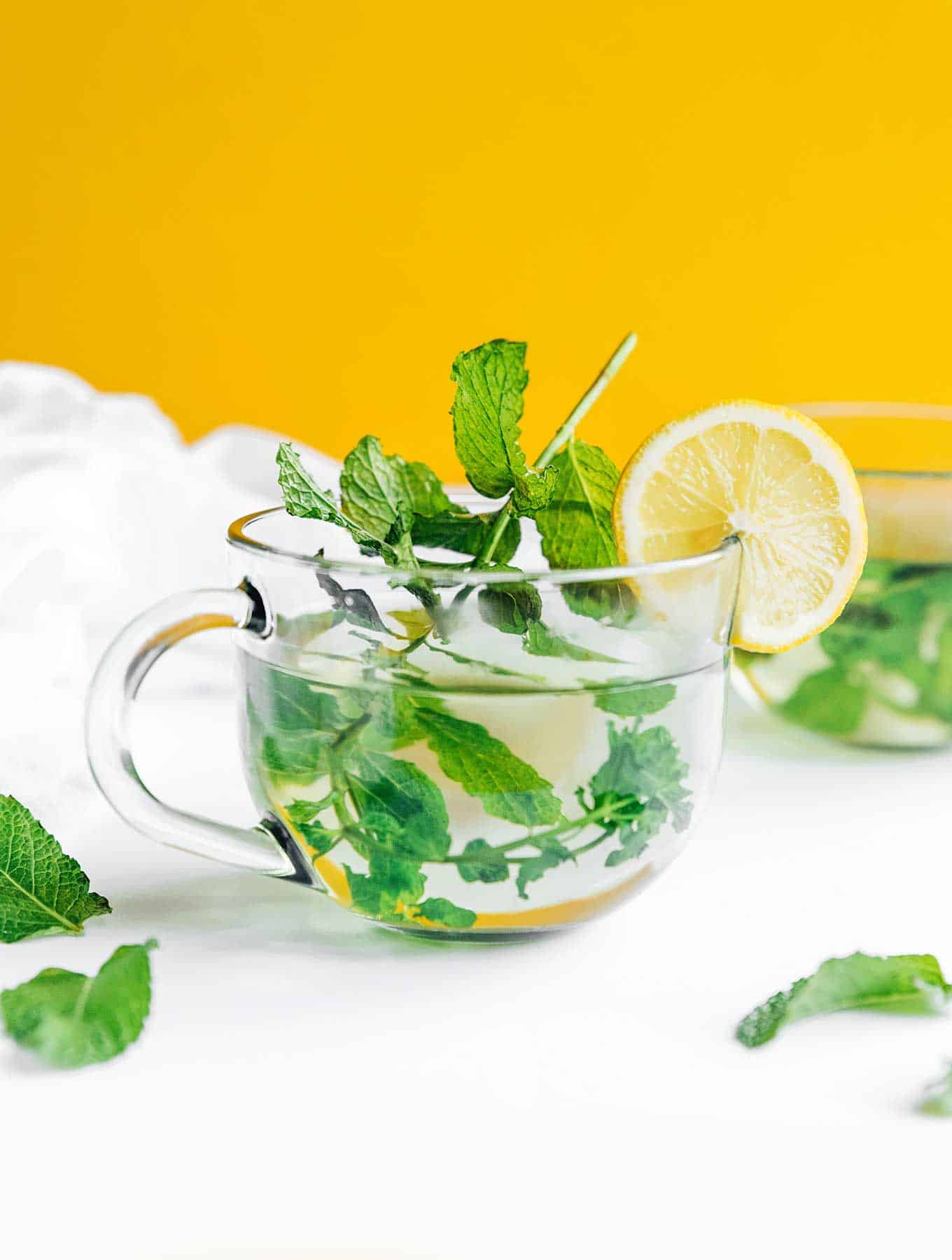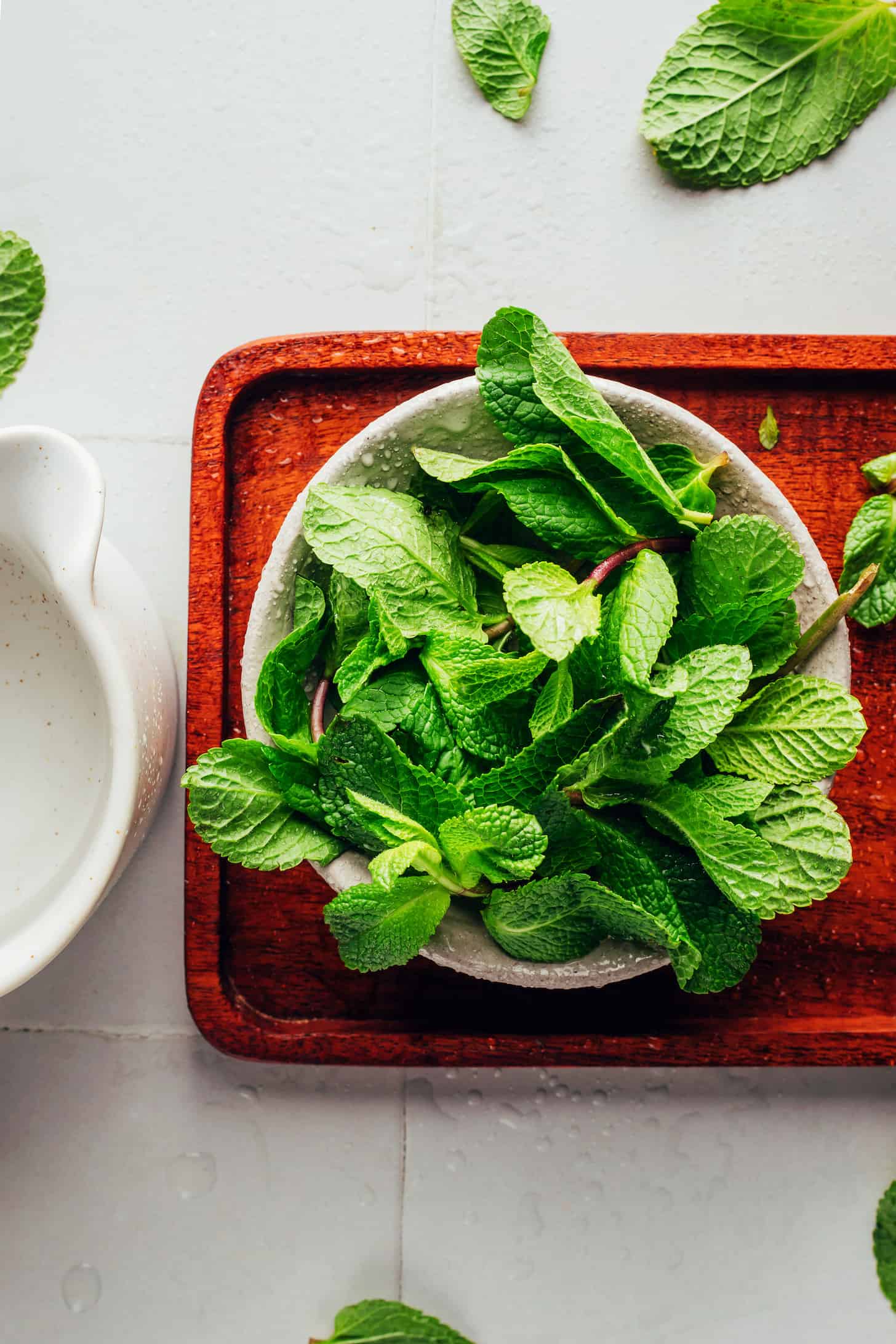As a lover of all things tea, I am excited to share with you the wonders of mint tea. In this article, we will explore the various health benefits of mint tea, how to make fresh mint tea, how to choose the best mint leaves for your brew, the perfect water temperature for brewing, tips for steeping to perfection, and even suggestions for enhancing its flavor with honey or lemon.
Additionally, we will delve into the world of mint tea variations by incorporating other herbs and spices. I will also provide serving suggestions and tips on storing your mint tea leaves for maximum freshness. Finally, we will discuss the best times of day to enjoy this refreshing and relaxing beverage.
Mint tea is not only a delicious beverage but also offers numerous health benefits that make it an excellent choice for any time of day. One notable benefit is its ability to improve digestion. Personally, I have struggled with digestive issues in the past and have found that a cup of warm mint tea after meals helps soothe my stomach and aids in digestion. Mint has natural properties that can alleviate indigestion and reduce bloating.
Another significant advantage of drinking mint tea is its stress-reducing properties. Life can be hectic at times, leaving us feeling overwhelmed and anxious. Whenever I find myself in need of relaxation or stress relief, a cup of hot mint tea does wonders for my state of mind. The aroma alone has a calming effect on me while sipping it slowly allows me to unwind from a long day.
Key Takeaways
- Mint tea has numerous health benefits, including aiding digestion and reducing stress.
- Choosing the best mint leaves for your tea involves selecting fresh, aromatic leaves with no signs of wilting or discoloration.
- The perfect water temperature for brewing mint tea is around 200°F (93°C).
- To steep mint tea to perfection, allow it to steep for 3-5 minutes before removing the leaves.
- Mint tea can be enjoyed any time of day and can be customized with honey, lemon, or other herbs and spices.
The Health Benefits of Mint Tea
Mint tea offers an array of health benefits beyond improved digestion and reduced stress levels mentioned earlier.
One such benefit is its ability to relieve headaches naturally without resorting to over-the-counter painkillers or prescription medications.
I remember one particularly stressful day when I felt an intense headache coming on; instead of reaching for my usual painkiller bottle,
I decided to try something different – sipping on some freshly brewed mint tea. To my surprise, within a short time, my headache began to subside, and I felt a sense of relief wash over me. Since then, I have turned to mint tea as a natural remedy for headaches whenever they arise.
Additionally, mint tea has been known to boost the immune system due to its high content of antioxidants and vitamins. During the winter months when colds and flu are rampant, I make it a habit to incorporate mint tea into my daily routine.
Not only does it provide warmth and comfort during chilly days but also helps strengthen my body’s defenses against common illnesses.
How To Make Fresh Mint Tea?
Making fresh mint tea is a simple and invigorating process. Here’s a basic recipe for you:
Ingredients:
- Fresh mint leaves (about 1 cup of packed leaves)
- 2 cups of water
- Honey or sweetener of your choice (optional)
- Lemon slices (optional)
Instructions:
- Harvest Mint Leaves:
- If you have a mint plant, pluck about 1 cup of fresh mint leaves. Rinse them thoroughly to remove any dirt or impurities.
- Crush or Bruise Mint Leaves:
- Gently crush or bruise the mint leaves using a mortar and pestle or by rolling them between your hands. This helps release the essential oils and flavor.
- Boil Water:
- Bring 2 cups of water to a boil. You can use a kettle or a saucepan for this.
- Place Mint Leaves in Teapot or Pitcher:
- Put the crushed mint leaves into a teapot or heatproof pitcher.
- Pour Boiling Water Over Mint:
- Pour the boiling water over the mint leaves.
- Steep the Mint Tea:
- Allow the mint leaves to steep in the hot water for about 5 to 10 minutes. The longer you steep, the stronger the flavor will be.
- Strain the Tea:
- Strain the tea to remove the mint leaves. You can use a fine mesh strainer or a tea infuser.
- Sweeten (Optional):
- If desired, add honey or your preferred sweetener to the hot mint tea. Stir until the sweetener is dissolved.
- Cool Slightly:
- Let the tea cool slightly before serving. You can add ice cubes if you want to serve it cold immediately.
- Garnish (Optional):
- Garnish the mint tea with lemon slices for a citrusy kick.
- Serve and Enjoy:
- Pour the fresh mint tea into cups or glasses.
- Serve and enjoy the refreshing taste of homemade mint tea!
This mint tea is not only delicious but also known for its potential health benefits. It’s a great way to relax and unwind, especially in the afternoon or evening. Feel free to adjust the sweetness and experiment with different variations to suit your taste preferences.
How to Choose the Best Mint Leaves for Your Tea
When it comes to selecting the freshest and most flavorful mint leaves for your tea, there are a few key factors you should consider. First and foremost is freshness. Look for leaves that are vibrant green in color with no signs of wilting or browning. Freshness is crucial as it directly impacts the taste and aroma of your final brew.
Another factor to consider is the type of mint you prefer. There are several varieties available,
such as spearmint, peppermint, apple mint, and chocolate mint – each with its unique flavor profile.
Experimenting with different types can be an exciting journey in discovering your personal favorite.
If possible, opt for organic or homegrown mint leaves as they tend to have superior flavor compared to commercially grown ones that may have been treated with pesticides or other chemicals.
The Perfect Water Temperature for Brewing Mint Tea
| Water Temperature | Flavor Profile | Steeping Time |
|---|---|---|
| 160°F (71°C) | Mild flavor, less minty | 5-7 minutes |
| 175°F (79°C) | Medium flavor, balanced mintiness | 3-5 minutes |
| 195°F (91°C) | Strong flavor, intense mintiness | 2-3 minutes |
To achieve the best flavor when brewing your cup of refreshing mint tea, paying attention to water temperature is essential. While some teas require boiling water, mint tea benefits from slightly cooler temperatures between 175°F (80°C) and 185°F (85°C).
Boiling water can sometimes result in an overly bitter taste that masks the delicate flavors
of fresh mint leaves. By using water that is just below boiling point, you allow the mint leaves
to release their natural oils and flavors without becoming overpowering.
To achieve the ideal water temperature, bring your water to a boil and then let it cool for a few minutes. Alternatively, you can use a thermometer to ensure accuracy. This extra step may seem tedious, but it makes all the difference in creating a perfectly balanced cup of mint tea.
Tips for Steeping Mint Tea to Perfection
Steeping mint tea requires attention to detail and patience. To ensure the perfect cup every time, follow these step-by-step instructions:
1. Start by heating your water to the ideal temperature mentioned earlier.
2. While waiting for the water to reach the desired temperature, gather your fresh mint leaves.
Depending on personal preference, you can use anywhere from 5-10 leaves per cup of tea.
3. Once your water is ready, place the mint leaves in a teapot or directly into your mug if using an infuser.
4. Pour hot water over the leaves and cover with a lid or saucer to trap heat and prevent evaporation of essential oils.
5. Allow the tea to steep for approximately 5-7 minutes or until desired strength is achieved.
Remember that steeping too long may result in bitterness while steeping too short may yield weak flavor.
Adding Honey or Lemon to Your Mint Tea
While mint tea is delicious on its own, adding honey or lemon can enhance its flavor profile even further.
Honey brings natural sweetness that complements the refreshing taste of mint without overpowering it. I often find myself reaching for honey when I want my cup of tea to have a touch of sweetness but still maintain its herbal essence.
On occasions when I desire an extra zesty kick, I squeeze some fresh lemon juice into my mug of hot mint tea. The citrusy notes from lemon add brightness and depth while balancing the coolness of mint.
Experiment with different amounts of honey or lemon to find your preferred level of sweetness and acidity. Remember, the beauty of tea lies in its versatility, allowing you to customize it according to your taste preferences.
Mint Tea Variations: Adding Other Herbs and Spices
If you’re feeling adventurous and want to explore beyond traditional mint tea, incorporating other herbs and spices can take your brew to a whole new level.
One popular variation is adding a sprig of fresh lavender alongside the mint leaves. Lavender’s floral notes complement the mint’s refreshing qualities, creating a soothing blend that promotes relaxation.
For those who enjoy a hint of spice, consider adding a pinch of cinnamon or ginger. These warming spices add depth and complexity while providing additional health benefits such as improved circulation and digestion.
Another intriguing combination is mint tea with chamomile flowers. Chamomile’s gentle flavor pairs harmoniously with mint, creating an infusion that is both calming and invigorating at the same time. This blend is perfect for winding down after a long day or preparing for restful sleep.
Serving Suggestions for Mint Tea
Mint tea can be enjoyed in various ways depending on personal preference and occasion.
For those who prefer their beverages hot, simply pour freshly brewed mint tea into your favorite teacup or mug. Savor each sip slowly, allowing the flavors to unfold on your palate while enjoying moments of tranquility.
On warmer days when something refreshing is desired, iced mint tea comes to the rescue. To make iced mint tea, follow the same brewing instructions mentioned earlier but double up on ingredients to account for dilution when pouring over ice. Allow it to cool before refrigerating or pouring over ice cubes directly.
Garnish with fresh sprigs of mint or slices of lemon for an extra touch of elegance.
Storing Your Mint Tea Leaves for Maximum Freshness
To maintain the freshness and flavor of your mint tea leaves, proper storage is crucial. Exposure to air, light, and moisture can cause them to lose their potency over time.
The best way to store mint tea leaves is in an airtight container kept in a cool, dark place. Avoid storing them near spices or other strong-smelling ingredients as they can absorb odors easily.
If you have an excess amount of fresh mint leaves that you won’t be able to use before they spoil, consider freezing them. Simply wash and dry the leaves thoroughly before placing them in a freezer-safe bag or container.
Frozen mint leaves can be used directly in your tea without thawing, making it convenient for future brewing sessions.
The Best Time of Day to Enjoy Mint Tea
Mint tea is versatile enough to be enjoyed at any time of day, but there are certain moments when it shines brightest.
In the morning, a cup of hot mint tea provides a refreshing start to the day, awakening your senses and preparing you for what lies ahead. Its invigorating qualities help clear the mind and provide an energy boost without relying on caffeine.
During the afternoon slump when productivity wanes, sipping on some mint tea can provide much-needed revitalization.
Instead of reaching for another cup of coffee that may disrupt sleep later on,
opting for mint tea offers mental clarity while keeping you hydrated throughout the day.
In the evening, after dinner or right before bedtime, enjoying a warm cup of mint tea promotes relaxation and aids in digestion. It serves as a gentle reminder to slow down and unwind from daily stresses, preparing both body and mind for restful sleep ahead.
The Refreshing and Relaxing Benefits of Mint Tea
In conclusion, mint tea is not only a delicious beverage but also offers numerous health benefits that make it an excellent choice throughout the day. From improved digestion to stress reduction, its natural properties can enhance your overall well-being.
By selecting the freshest mint leaves, brewing at the ideal water temperature, and steeping with care, you can create a cup of mint tea that is both flavorful and aromatic.
Experimenting with additions such as honey or lemon allows you to customize your brew according to personal taste preferences.
For those seeking variety, incorporating other herbs and spices into your mint tea opens up a world of possibilities. From lavender to cinnamon, each addition brings its unique flavor profile and health benefits.
Whether enjoyed hot or iced, mint tea provides moments of tranquility and refreshment throughout the day. Its versatility makes it suitable for any occasion – be it a morning pick-me-up, an afternoon revitalizer, or an evening wind-down ritual.
So next time you find yourself in need of a soothing beverage that not only tastes great but also promotes wellness, reach for some fresh mint leaves and embark on a journey of discovering the refreshing and relaxing benefits of mint tea.
FAQs
What is mint tea?
Mint tea is a herbal tea made by steeping mint leaves in hot water. It is known for its refreshing taste and aroma.
What are the health benefits of mint tea?
Mint tea is known to aid digestion, relieve stress, and improve sleep. It also has anti-inflammatory and antibacterial properties.
How do you make mint tea?
To make mint tea, boil water and pour it over fresh mint leaves. Let it steep for 5-10 minutes, then strain the leaves and enjoy.
Can you add sweeteners to mint tea?
Yes, you can add sweeteners like honey or sugar to mint tea to enhance its taste. However, it is recommended to use natural sweeteners in moderation.
What are some variations of mint tea?
Some variations of mint tea include adding lemon juice, ginger, or other herbs like chamomile or lavender. You can also make iced mint tea by adding ice cubes and lemon slices.
Originally posted 2024-01-17 17:27:11.




